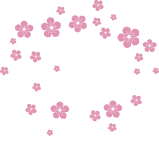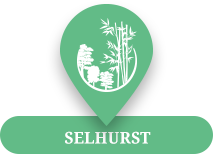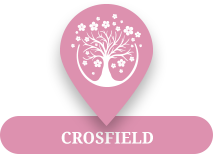Assessment and Tracking Progress
Home Visits and Starting Nursery
For all children joining the nursery in September, a home visit is offered. Where this is not possible, we will offer to facilitate either a meeting via the telephone / video call or arrange a time for parents to come in to the nursery to meet with their child’s key worker. This meeting ‘sets the scene’ for children’s learning at nursery. Parents have the opportunity to share information about their child’s early experiences and interests, their likes and dislikes, how they communicate, their physical health and well-being and to raise any anxieties or concerns. Nursery key workers have the opportunity to begin to form relationships, getting to know the child and family and using the information shared, to support the child's transition to nursery, for example, through setting up preferred play activities on the first day.
After the first week and settling in...
Within the first few weeks of starting nursery, key workers arrange a meeting with parents to discuss how their child has settled in and discuss what they have observed. It is a time to talk about their confidence as they move away from their parent and begin to develop relationships and play and explore alongside others. It is a time to share information about their early communication skills, how well they are able to express their needs, join in with others and follow nursery routines. It allows parents and practitioners to think about their physical and self-help skills and how well they are able to engage with the learning experiences we offer; to celebrate achievements and identify any areas where more help may be needed. It may be a time when we agree to seek advice from other members of the Federation staff team (for example, the Special Educational Needs Co-ordinator) or wider professionals (for example, signposting families to Chatterbox to meet with a speech and language therapist). For 2 year olds, this may be combined with the statutory 2 year check.
Baseline Assessment, Progress and Tracking
As each child starts nursery, they are identified as a focus child for their first two weeks. During this time, staff get to know the child, build relationships with the child and family and make observations. After the two week period, information about the child is shared at a ‘Focus Children’ meeting, where all key people contribute. From this, any initial barriers to learning are identified and plans made for support (if not already in place). The Key worker completes the initial assessment and shares this with parents. The Keyworker in conjunction with one of the teachers then completes an initial baseline assessment looking at the child’s attainment across all seven areas of learning of the EYFS. This format has been chosen to allow for consistency and easy transition to Reception classes.
Tracking is then updated termly, after they have been a focus child. Following all practitioners input and the information gathered during the focus children’s meeting, both the Keyworker and Class Teacher update the tracking information for both attainment and progress against the seven areas of the EYFS.
Tracking is reviewed at the end of each term and plans put in place to support children, where needed (if not already in place).
Children with additional needs are tracked termly using Croydon’s Assessment Tool, which captures their progress in smaller steps.
Summative Report
In the final half of the summer term prior to leaving nursery, a summative report is written for each child. This highlights their key progress, learning characteristics and access to the curriculum. It will also refer to any barriers to learning which have been identified and how these have been overcome. Alongside individual school arrangements, these support the child’s transition into a Reception class.
Learning Journals (Tapestry)
Our observations of children’s leaning and development are recorded on Tapestry, which is a secure online learning journal. Every child’s journal will include significant examples of their learning, highlighting their characteristics as a learner and their progress over time. This may show a child’s barriers to learning and how they are responding to help as well as their strengths. It will include both their voice and their parents’ voice, as families are able to contribute their own observations from home. Our observations are addressed to the child and are intended to be read aloud and shared with children. They include a combination of written text, photographs and video footage.
A folder containing observations and examples of children’s work (known as ‘Special Books’) are also kept in the nursery, and at a height accessible to children, so that they can easily access a record of their learning and achievements.








